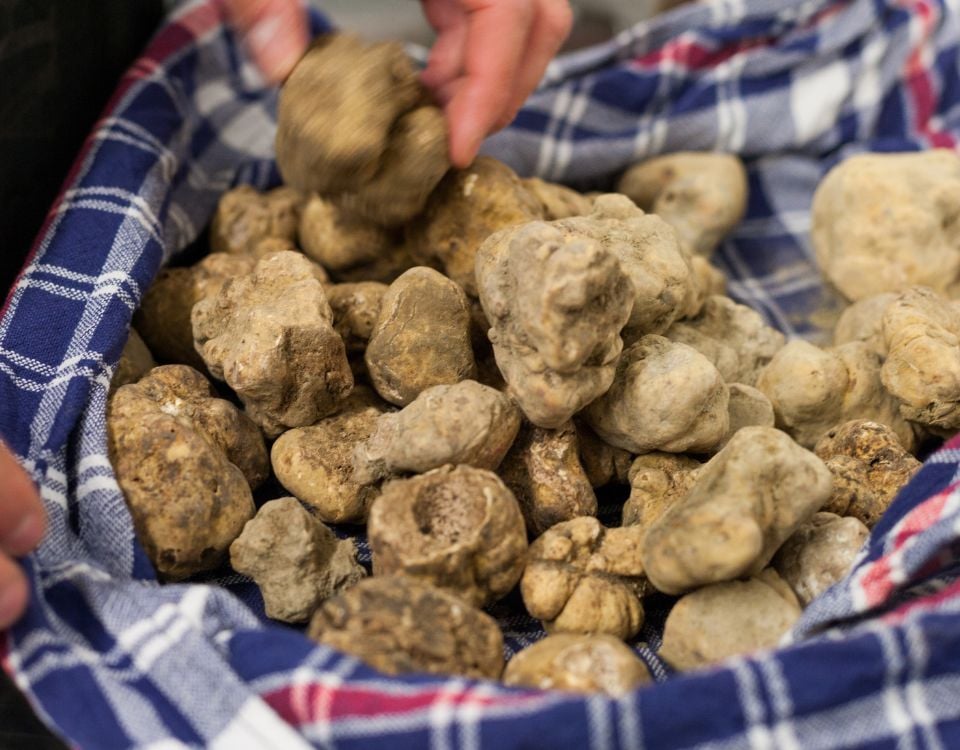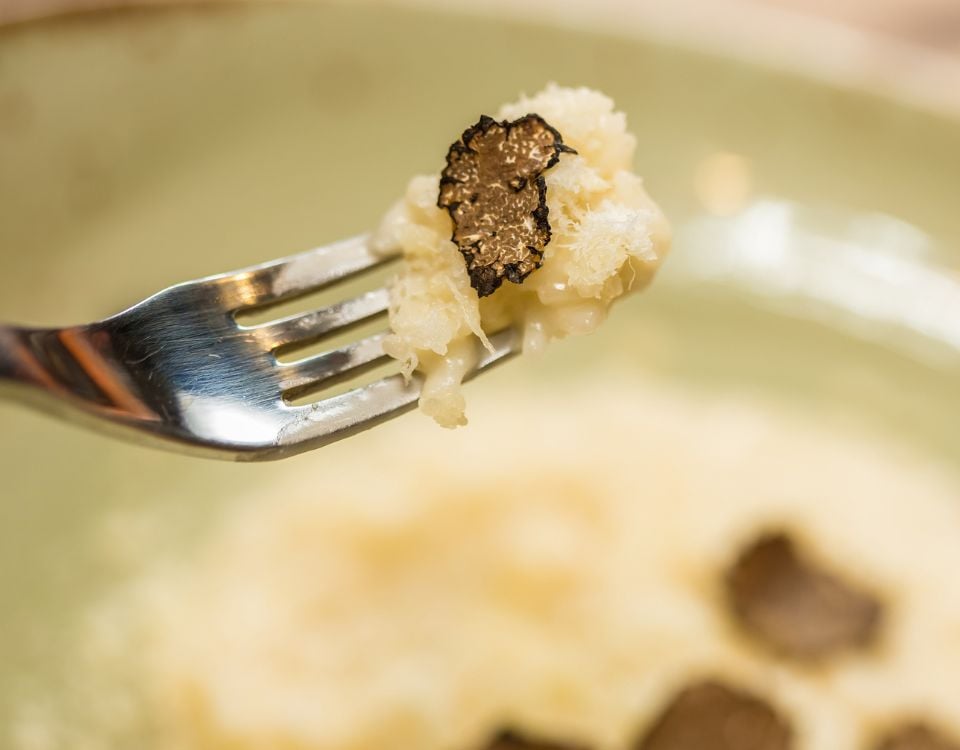Characteristics of Tuscan Truffle: Aroma, Taste, and Varieties
The Tuscan truffle represents an excellence of Italian gastronomy, and approaching its discovery requires both sensitivity and culture. Speaking of the characteristics of the Tuscan truffle immediately recalls its enveloping aroma and refined taste, which make it a sought-after ingredient both in haute cuisine and on the most authentic tables.
Each seasonal variety in Tuscany brings with it specific organoleptic qualities: at times the aroma recalls the scent of damp earth, at others a crisp and penetrating fragrance that lingers in memory. The taste reflects a balance between delicacy and savoriness that truly shines when the truffle is eaten fresh, often shaved raw, enhancing its aromatic notes without overpowering them.
The inner flesh, called the gleba , ranges from light hazelnut with white veins in some varieties, to reddish tones in others, to the deep shades of black truffles. The outer surface, or peridium , can be smooth and delicate or rough and pronounced, giving the truffle a visual personality as captivating as its aroma. This combination of fragrance, flavor, appearance, and texture fully defines the Tuscan truffle and distinguishes its many varieties, which complement one another without redundancy.
What is the typical Tuscan truffle?
The typical Tuscan truffle includes several varieties that follow one another throughout the year, each with distinctive traits closely tied to the land where it grows.
- The prized white truffle , botanically Tuber magnatum pico , is the most famous and rare. It is recognized by its smooth peridium, pale yellow with occasional ochre shades, and its hazelnut-colored gleba streaked with fine white veins. Sizes vary greatly, with some specimens exceeding half a kilo or even a full kilo. Its aroma is intense, unmistakable, slightly garlicky and spicy, while the taste is rich and aromatic, and must always be consumed fresh, since cooking diminishes its complexity.
- The marzuolo truffle , or bianchetto , younger and less expensive, has a smooth peridium ranging from light to reddish hues, and a tawny gleba with sparse, coarse veins. Its size is smaller, often resembling a hazelnut or a large egg. Its aroma is slightly pungent, vaguely garlicky, with a subtle yet persistent scent.
- The scorzone , or summer black truffle ( Tuber aestivum ), stands out with a warty black peridium and a hazelnut gleba laced with branching white veins. It is appreciated for its generous size and delicate mushroomy scent, similar to porcini. Ideal for enriching summer dishes, it is widespread throughout Tuscany, thriving under oaks, holm oaks, and hazelnut trees.
- The hooked truffle ( Tuber uncinatum Chatin ), similar to the scorzone but with less pronounced warts and a gleba that turns violet once cut, appears between October and January. It is smaller in size, and its delicate aroma refines with maturation.
- The prized black truffle ( Tuber melanosporum ) is identified by its dark, rough peridium with small warts and a violet-toned gleba streaked with thin white veins. Its aroma is sweet and intense, and in Tuscany its harvest is limited to areas such as Chianti, Mugello, Casentino, and Val di Chiana.
What is the truffle season in Tuscany?
The truffle season in Tuscany is a fascinating sequence of varieties that alternate throughout the year, offering consumers and gourmets a naturally diverse selection.
- The marzuolo is harvested between January and April, bringing its fragrant, subtle spring aromas.
- The scorzone appears in summer and continues until late autumn.
- The hooked truffle ripens from October to January.
- The prized black truffle dominates the winter months, mainly from mid-November to mid-March.
- The prized white truffle is typical of autumn, especially from October to December, with areas such as the Crete Senesi and San Miniato Hills renowned for their excellent production.
Aroma, Taste, and Regional Varieties: A Union of Excellence
Exploring the characteristics of the Tuscan truffle reveals the harmony between aroma and flavor, which changes depending on the variety yet preserves a common thread: the authenticity of the Tuscan woodland, the limestone soil, the presence of oaks and hazelnuts, and the mild climate. Regional varieties, including such gems as the white truffle of the Crete Senesi or the prized black truffle of Chianti, reflect histories, traditions, and environmental peculiarities. Tuscany preserves the centuries-old heritage of truffle culture with passion and expertise, both in harvesting and in processing.
In this context, the Savini family stands as a model of excellence. Active since 1920 as truffle hunters and now a benchmark in the sector, Savini Tartufi enhances fresh truffles in every form and enriches the experience with truffle-hunting activities and carefully crafted products. Their interpretation of the truffle allows consumers to discover the raw ingredient in its truest form—most notably with fresh truffle, which best expresses the nature of this fungus.
The bond between land, regional varieties, and seasonality gives the Tuscan truffle its inimitable allure. Its aroma and flavor are not the result of artifice, but of an ancient symbiosis between plant and soil. This synergy gives rise to flavors that evolve with the climate and the forests, making each season an opportunity to encounter a new version of this woodland diamond.







